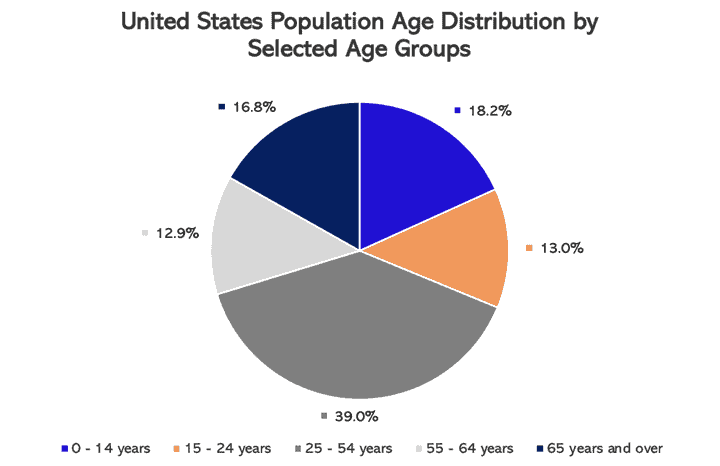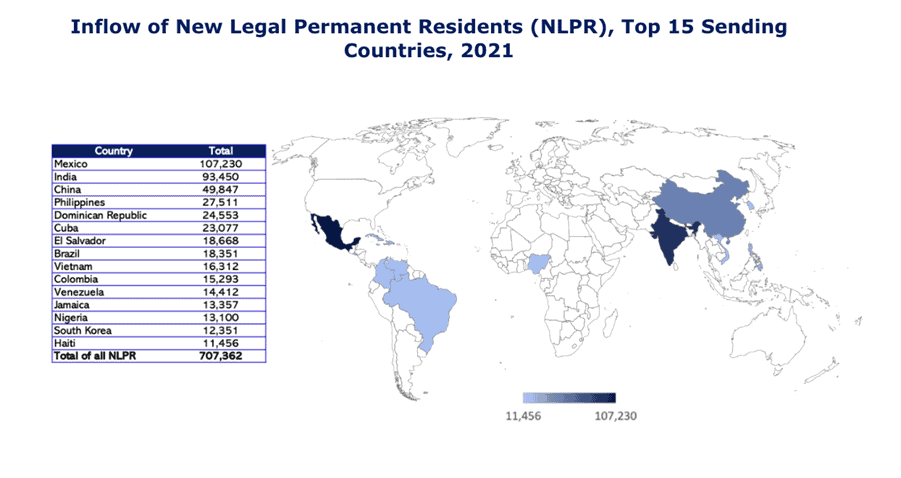In the opening installment of this mini-series, we delved into the fact that the United States is the world’s largest beneficiary of foreign direct investment, capturing a staggering 30% of global inflows, amounting to a whopping $400 billion. While there are several reasons behind this remarkable feat, this series will explore eight key factors that entice foreign companies to choose the United States as a destination for business expansion. In this article, we will focus our attention on the unparalleled consumer market of the United States. It is highly recommended that you keep following this series to gain a comprehensive insight into why the United States remains the prime choice for foreign direct investment.
In the weeks to come, we will explore a range of topics that shed light on why the United States continues to be the top destination for foreign direct investment (FDI). These topics include:
• The World’s Most Dynamic Entrepreneurial Ecosystem
• Ease of Doing Business, Stable Political System, and Robust Economy
• Talented, Productive, and Diverse Workforce
• Rule of Law and Intellectual Property Rights
• Unmatched Global Status in Key Industries, such as Financial Services, Technology Sectors, among others
• Financial Incentives
• Access to Foreign Markets
Unrivaled Consumer Market
One of the main reasons why the USA is an attractive destination for FDI is its large consumer market. The United States is home to one of the world’s largest, wealthiest, and most diverse consumer markets. In 2022, the United States’ population was 325 million, contributing close to $20 trillion to the U.S. economy. Projections indicate that in 2023, the United States will continue to maintain its position as the foremost consumer market on the planet, with a 30% share of global consumer expenditure. During 2022, United States household final consumption expenditure (HFCE) accounted for 34% of the world’s household consumption, making it the top country in this regard. HFCE represents the market worth of all goods and services purchased by households, including durable products such as cars, washing machines, and home computers. China follows the United States with 10% of worldwide household final consumption, while Japan and India have 5% and 4%, respectively. When assessing Europe as a single entity, it surpasses China and takes second place, with China falling to third place at 15% and 10%, respectively.

When considering various indicators of economic prosperity, the United States consistently outperforms other nations. As of 2021, the median annual income of a US household stands at $70,784, placing it 7th in global rankings. Additionally, when examining the average disposable income per capita, the United States takes the top spot with a figure of $54,854. This metric factors in the gross income of the average citizen, providing a more accurate representation of the country’s economic strength.

Despite the existence of other highly populated nations with considerable national, household, and individual wealth, none surpass the United States in terms of economic dominance. As the third most populous country globally, combined with high household consumption rates and high disposable incomes, the United States stands out as the top consumer market worldwide. This advantageous position remains unparalleled, presenting an enviable opportunity for foreign businesses seeking to invest in the US. In the following section, we will explore several critical factors contributing to the appeal of the US consumer market.
Demographics of the U.S. Consumer Market
It is worth emphasizing that the US consumer market is incredibly diverse, offering a significant advantage for companies investing in the country as they can be confident of finding a receptive audience for their products. In the following section, we will highlight the most notable features of this market.
Age
Compared to rising life expectancy rates observed worldwide, the population of the United States skews young. As of 2021, the average age of the US population was 38.8 years, with the average male age at 37.7 years and the average female age at 39.8 years. The consumer market in the United States can also be segmented into different generations, each with unique purchasing habits. Currently, the largest group is the millennials, who were born between 1981 and 1996. Following them is the baby boomer generation, born between 1946 and 1964. Meanwhile, Generation Z, born between 1997 and 2012, represents the youngest and fastest-growing group.

Ethnicity
Unlike certain nations with highly diversified ethnic populations, the United States boasts a unique melting pot dynamic. As a primarily immigrant nation, individuals often assimilate to the customs and culture of their host country, abandoning many of the habits, behaviors, and preferences of their country of origin. However, companies from all corners of the globe are still likely to encounter consumers in the US who are interested in purchasing their products or services, whether they are geared toward specific ethnic groups or not.
Immigration
Immigration has played a significant role in the development of the United States over the past century. Since the first major influx of European immigrants in the early 1900s, people from around the world have made substantial contributions to the nation’s economic and business attractiveness. As of 2017, 44.4 million individuals, representing 13.6% of the population, were foreign-born. According to the 2010 census, Latin America and the Caribbean comprise the largest immigration group, accounting for 53% of the foreign-born population. As of 2018, this region remained the most significant source of immigrants to the United States. The US is currently home to around 90 million immigrants and US-born children of immigrants, which represents 28% of the overall US population.

Consumer Behavior
Consumer behavior in the US market is influenced by various factors, including cultural, social, and economic factors. Consumers in the US are diverse, and their preferences vary depending on their age, income, and geographic location. However, there are some general trends that foreign investors should consider when entering the US market.
-
Quality and Price
The US market is known for its high-quality products and services. Consumers in the US are willing to pay a premium for products that meet their expectations in terms of quality. However, price is also an essential factor, particularly in times of economic uncertainty.
-
Convenience and Time-Saving
US consumers value convenience and time-saving. As a result, online shopping has become increasingly popular in recent years. Consumers prefer to shop online because it saves time and offers more convenience. Mobile shopping is also gaining popularity, with consumers increasingly using their smartphones to make purchases.
-
Brand Loyalty
Brand loyalty is an essential factor in the US market. Consumers in the US are often loyal to specific brands and products, making it difficult for new players to enter the market. Foreign investors should consider developing strong branding strategies to build trust and loyalty among US consumers.
-
Environmental and Social Responsibility
Environmental and social responsibility is becoming an essential factor for US consumers. Consumers are increasingly concerned about the environmental impact of products and services they purchase. They also expect companies to take social responsibility seriously and support social causes.
In conclusion, the United States’ consumer market is undoubtedly one of the primary factors behind the country’s success in attracting foreign direct investment. With a large, diverse, and wealthy population, the US is the top consumer market worldwide. The country’s demographics, including age, ethnicity, and immigration trends, contribute to the market’s diversity and create a receptive audience for a wide range of products and services. Understanding consumer behavior in the US market is crucial for foreign investors seeking to establish a foothold in the country. By considering these factors and leveraging the opportunities presented by the US consumer market, foreign companies can establish a strong presence in the world’s largest economy.







